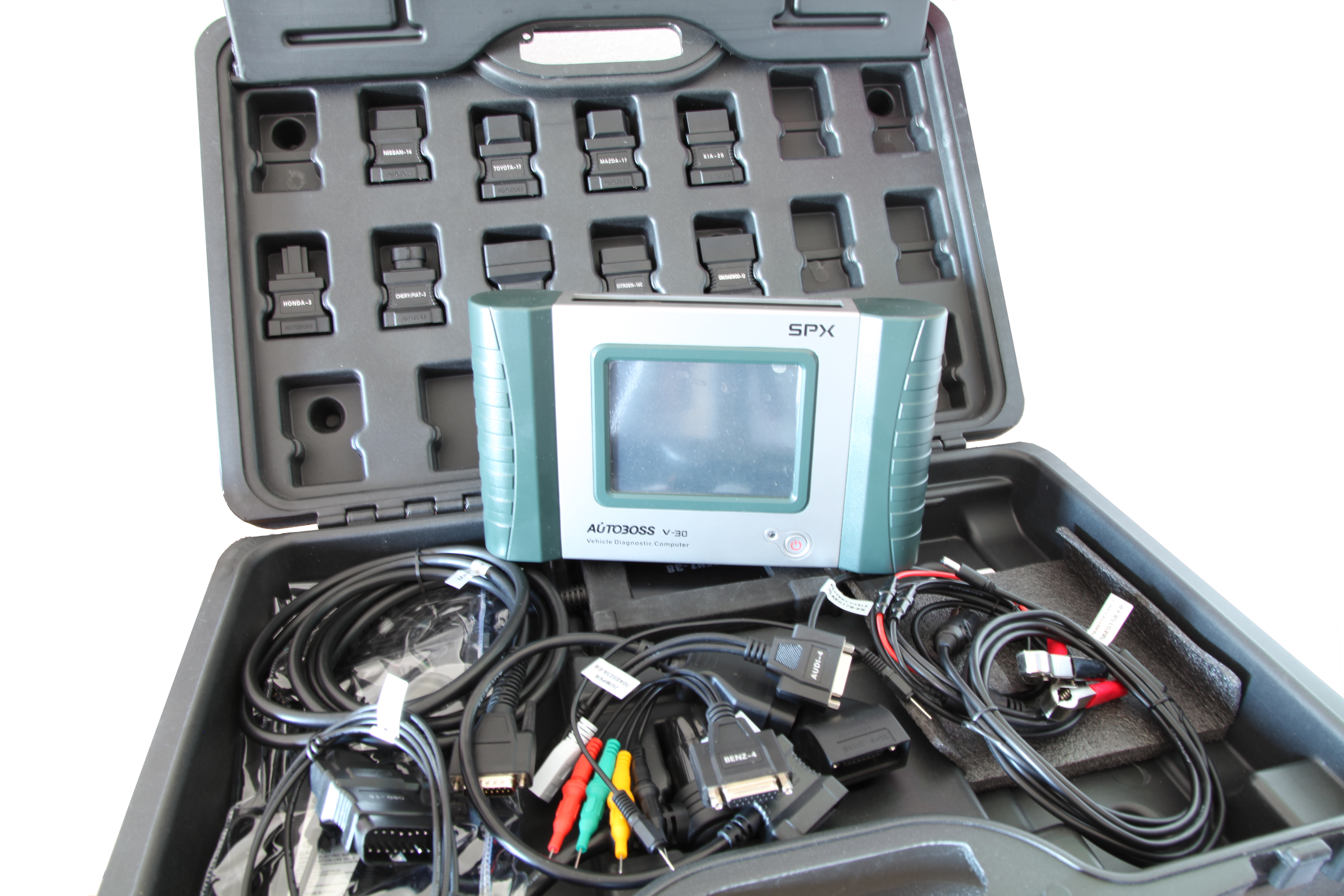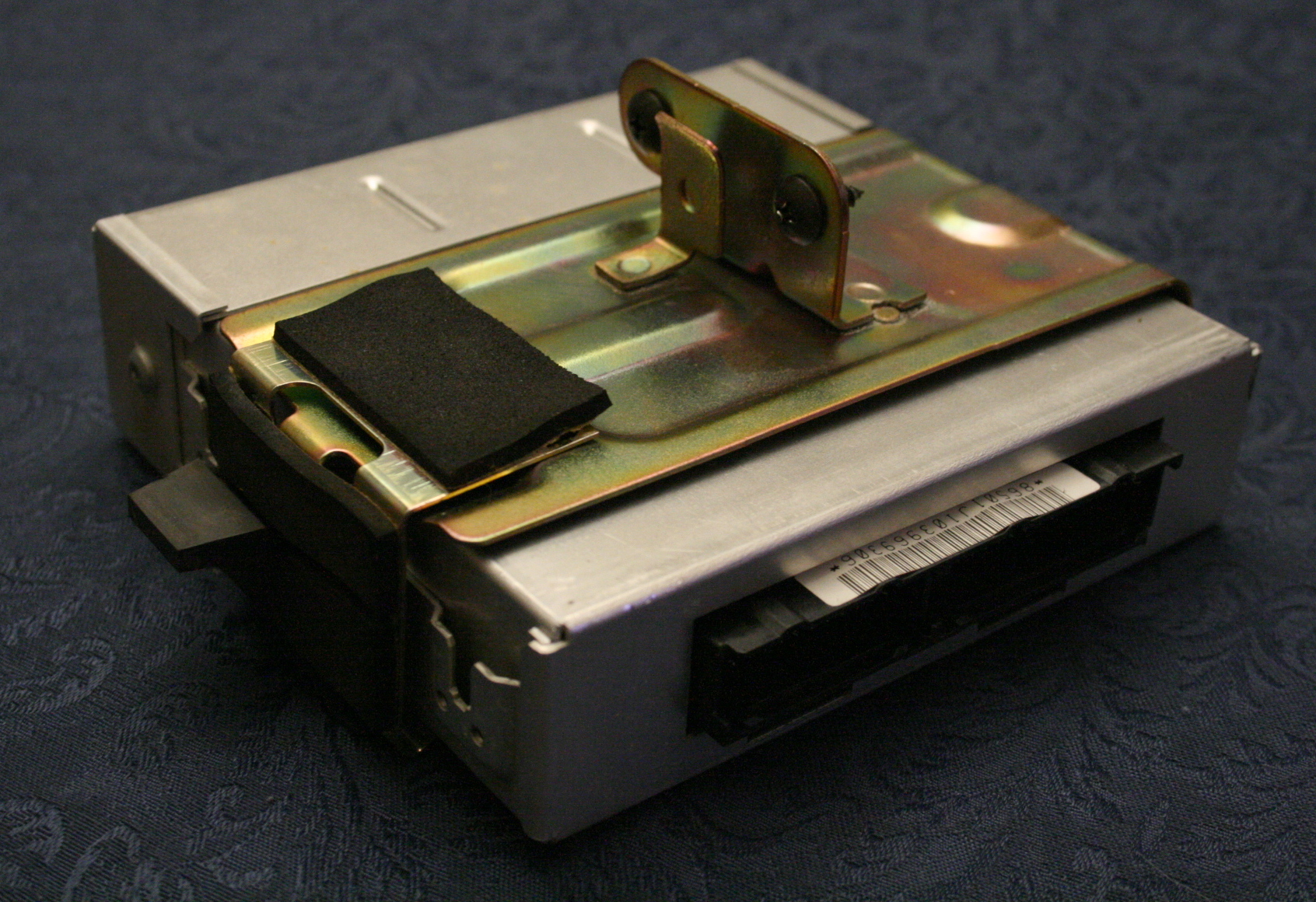|
Unified Diagnostic Services
Unified Diagnostic Services (UDS) is a diagnostic communication protocol used in electronic control units (ECUs) within automotive electronics, which is specified in the ISO 14229-1. It is derived from ISO 14230-3 (KWP2000) and the now obsolete ISO 15765-3 (Diagnostic Communication over Controller Area Network (DoCAN)). 'Unified' in this context means that it is an international and not a company-specific standard. By now this communication protocol is used in all new ECUs made by Tier 1 suppliers of Original Equipment Manufacturer (OEM), and is incorporated into other standards, such as AUTOSAR. The ECUs in modern vehicles control nearly all functions, including electronic fuel injection (EFI), engine control, the transmission, anti-lock braking system, door locks, braking, window operation, and more. Diagnostic tools are able to contact all ECUs installed in a vehicle, which has UDS services enabled. In contrast to the CAN bus protocol, which only uses the first and second layers ... [...More Info...] [...Related Items...] OR: [Wikipedia] [Google] [Baidu] |
Communication Protocol
A communication protocol is a system of rules that allows two or more entities of a communications system to transmit information via any kind of variation of a physical quantity. The protocol defines the rules, syntax, semantics (computer science), semantics and synchronization of communication and possible Error detection and correction, error recovery methods. Protocols may be implemented by Computer hardware, hardware, software, or a combination of both. Communicating systems use well-defined formats for exchanging various messages. Each message has an exact meaning intended to elicit a response from a range of possible responses pre-determined for that particular situation. The specified behavior is typically independent of how it is to be Implementation, implemented. Communication protocols have to be agreed upon by the parties involved. To reach an agreement, a protocol may be developed into a technical standard. A programming language describes the same for computations, ... [...More Info...] [...Related Items...] OR: [Wikipedia] [Google] [Baidu] |
OSI Model
The Open Systems Interconnection model (OSI model) is a conceptual model that 'provides a common basis for the coordination of SOstandards development for the purpose of systems interconnection'. In the OSI reference model, the communications between a computing system are split into seven different abstraction layers: Physical, Data Link, Network, Transport, Session, Presentation, and Application. The model partitions the flow of data in a communication system into seven abstraction layers to describe networked communication from the physical implementation of transmitting bits across a communications medium to the highest-level representation of data of a distributed application. Each intermediate layer serves a class of functionality to the layer above it and is served by the layer below it. Classes of functionality are realized in all software development through all and any standardized communication protocols. Each layer in the OSI model has its own well-defined functi ... [...More Info...] [...Related Items...] OR: [Wikipedia] [Google] [Baidu] |
OBD-II PIDs
OBD-II PIDs (On-board diagnostics Parameter IDs) are codes used to request data from a vehicle, used as a diagnostic tool. SAE standard J1979 defines many OBD-II PIDs. All on-road vehicles and trucks sold in North America are required to support a subset of these codes, primarily for state mandated emissions inspections. Manufacturers also define additional PIDs specific to their vehicles. Though not mandated, many motorcycles also support OBD-II PIDs. In 1996, light duty vehicles (less than ) were the first to be mandated followed by medium duty vehicles () in 2005. They are both required to be accessed through a standardized data link connector defined by SAE J1962. Heavy duty vehicles (greater than ) made after 2010, for sale in the US are allowed to support OBD-II diagnostics through SAE standard J1939-13 (a round diagnostic connector) according to CARB in title 13 CCR 1971.1. Some heavy duty trucks in North America use the SAE J1962 OBD-II diagnostic connector that is com ... [...More Info...] [...Related Items...] OR: [Wikipedia] [Google] [Baidu] |
On-board Diagnostics
On-board diagnostics (OBD) is a term referring to a vehicle's self-diagnostic and reporting capability. OBD systems give the vehicle owner or repair technician access to the status of the various vehicle sub-systems. The amount of diagnostic information available via OBD has varied widely since its introduction in the early 1980s versions of on-board vehicle computers. Early versions of OBD would simply illuminate a malfunction indicator light (MIL) or "idiot light" if a problem was detected, but would not provide any information as to the nature of the problem. Modern OBD implementations use a standardized digital communications port to provide real-time data in addition to a standardized series of diagnostic trouble codes, or DTCs, which allow a person to rapidly identify and remedy malfunctions within the vehicle. History * 1968: Volkswagen introduces the first on-board computer system, in their fuel-injected Type 3 models. This system is entirely analog with no diagnos ... [...More Info...] [...Related Items...] OR: [Wikipedia] [Google] [Baidu] |
Diagnostic Trouble Code
On-board diagnostics (OBD) is a term referring to a vehicle's self-diagnostic and reporting capability. OBD systems give the vehicle owner or repair technician access to the status of the various vehicle sub-systems. The amount of diagnostic information available via OBD has varied widely since its introduction in the early 1980s versions of on-board vehicle computers. Early versions of OBD would simply illuminate a malfunction indicator light (MIL) or "idiot light" if a problem was detected, but would not provide any information as to the nature of the problem. Modern OBD implementations use a standardized digital communications port to provide real-time data in addition to a standardized series of diagnostic trouble codes, or DTCs, which allow a person to rapidly identify and remedy malfunctions within the vehicle. History * 1968: Volkswagen introduces the first on-board computer system, in their fuel-injected Type 3 models. This system is entirely analog with no diagnos ... [...More Info...] [...Related Items...] OR: [Wikipedia] [Google] [Baidu] |
Public Key Infrastructure
A public key infrastructure (PKI) is a set of roles, policies, hardware, software and procedures needed to create, manage, distribute, use, store and revoke digital certificates and manage public-key encryption. The purpose of a PKI is to facilitate the secure electronic transfer of information for a range of network activities such as e-commerce, internet banking and confidential email. It is required for activities where simple passwords are an inadequate authentication method and more rigorous proof is required to confirm the identity of the parties involved in the communication and to validate the information being transferred. In cryptography, a PKI is an arrangement that ''binds'' public keys with respective identities of entities (like people and organizations). The binding is established through a process of registration and issuance of certificates at and by a certificate authority (CA). Depending on the assurance level of the binding, this may be carried out by an automa ... [...More Info...] [...Related Items...] OR: [Wikipedia] [Google] [Baidu] |
Authentication
Authentication (from ''authentikos'', "real, genuine", from αὐθέντης ''authentes'', "author") is the act of proving an assertion, such as the identity of a computer system user. In contrast with identification, the act of indicating a person or thing's identity, authentication is the process of verifying that identity. It might involve validating personal identity documents, verifying the authenticity of a website with a digital certificate, determining the age of an artifact by carbon dating, or ensuring that a product or document is not counterfeit. Methods Authentication is relevant to multiple fields. In art, antiques, and anthropology, a common problem is verifying that a given artifact was produced by a certain person or in a certain place or period of history. In computer science, verifying a user's identity is often required to allow access to confidential data or systems. Authentication can be considered to be of three types: The first type of au ... [...More Info...] [...Related Items...] OR: [Wikipedia] [Google] [Baidu] |
Diagnose
Diagnosis is the identification of the nature and cause of a certain phenomenon. Diagnosis is used in many different disciplines, with variations in the use of logic, analytics, and experience, to determine " cause and effect". In systems engineering and computer science, it is typically used to determine the causes of symptoms, mitigations, and solutions. Computer science and networking * Bayesian networks * Complex event processing * Diagnosis (artificial intelligence) * Event correlation * Fault management * Fault tree analysis * Grey problem * RPR Problem Diagnosis * Remote diagnostics * Root cause analysis * Troubleshooting * Unified Diagnostic Services Mathematics and logic * Bayesian probability * Block Hackam's dictum * Occam's razor * Regression diagnostics * Sutton's law copy right remover block Medicine * Medical diagnosis * Molecular diagnostics Methods * CDR Computerized Assessment System * Computer-assisted diagnosis * Differential diagnosis * Medical diagnos ... [...More Info...] [...Related Items...] OR: [Wikipedia] [Google] [Baidu] |
Interrogation
Interrogation (also called questioning) is interviewing as commonly employed by law enforcement officers, military personnel, intelligence agencies, organized crime syndicates, and terrorist organizations with the goal of eliciting useful information, particularly information related to suspected crime. Interrogation may involve a diverse array of techniques, ranging from developing a rapport with the subject to torture. Techniques Deception Deception can form an important part of effective interrogation. In the United States, there is no law or regulation that forbids the interrogator from lying about the strength of their case, from making misleading statements or from implying that the interviewee has already been implicated in the crime by someone else. See case law on trickery and deception ('' Frazier v. Cupp''). As noted above, traditionally the issue of deception is considered from the perspective of the interrogator engaging in deception towards the individual being inte ... [...More Info...] [...Related Items...] OR: [Wikipedia] [Google] [Baidu] |
CAN Bus
A Controller Area Network (CAN bus) is a robust vehicle bus standard designed to allow microcontrollers and devices to communicate with each other's applications without a host computer. It is a message-based protocol, designed originally for multiplex electrical wiring within automobiles to save on copper, but it can also be used in many other contexts. For each device, the data in a frame is transmitted serially but in such a way that if more than one device transmits at the same time, the highest priority device can continue while the others back off. Frames are received by all devices, including by the transmitting device. History Development of the CAN bus started in 1983 at Robert Bosch GmbH. The protocol was officially released in 1986 at the Society of Automotive Engineers (SAE) conference in Detroit, Michigan. The first CAN controller chips were introduced by Intel in 1987, and shortly thereafter by Philips. Released in 1991, the Mercedes-Benz W140 was the first produc ... [...More Info...] [...Related Items...] OR: [Wikipedia] [Google] [Baidu] |
Electronic Control Unit
An electronic control unit (ECU), also known as an electronic control module (ECM), is an embedded system in automotive electronics that controls one or more of the electrical systems or subsystems in a car or other motor vehicle. Modern vehicles have many ECUs, and these can include some or all of the following: engine control module (ECM), powertrain control module (PCM), transmission control module (TCM), brake control module (BCM or EBCM), central control module (CCM), central timing module (CTM), general electronic module (GEM), body control module (BCM), and suspension control module (SCM). These ECUs together are sometimes referred to collectively as the car's computer though technically they are all separate computers, not a single one. Sometimes an assembly incorporates several individual control modules (a PCM often controls both the engine and the transmission). [...More Info...] [...Related Items...] OR: [Wikipedia] [Google] [Baidu] |
Engine Control Unit
An engine control unit (ECU), also commonly called an engine control module (ECM), is a type of electronic control unit that controls a series of actuators on an internal combustion engine to ensure optimal engine performance. It does this by reading values from a multitude of sensors within the engine bay, interpreting the data using multidimensional performance maps (called lookup tables), and adjusting the engine actuators. Before ECUs, air–fuel mixture, ignition timing, and idle speed were mechanically set and dynamically controlled by mechanical and pneumatic means. If the ECU has control over the fuel lines, then it is referred to as an electronic engine management system (EEMS). The fuel injection system has the major role of controlling the engine's fuel supply. The whole mechanism of the EEMS is controlled by a stack of sensors and actuators. Workings Control of air–fuel ratio Most modern engines use some type of fuel injection to deliver fuel to the cylinders. ... [...More Info...] [...Related Items...] OR: [Wikipedia] [Google] [Baidu] |






